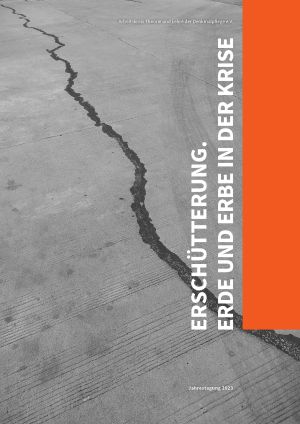How to Cite
License (Chapter)

This work is licensed under a Creative Commons Attribution-NonCommercial-NoDerivatives 4.0 International License.
Published
Ebenen der Erschütterung
This article reflections on the term “Erschütterung”, which has a number of different meanings not only in German but also in other languages. It denotes physical movement as well an emotional onslaught that is usually extremely violent in its effects and is also used to describe an overarching questioning of the world triggered by a sudden, ‘shattering’ event. Physical shocks like earthquakes often generate an emotional shock, although they don’t tend to cause existential crises. Interestingly, however, not everyone experiences the same kind of emotional shock from a physical shock, and not all emotional shocks become part of the collective memory to the same extent. Using examples of famous natural disasters from different eras to which not only people but also buildings fell victim (the 1755 Lisbon earthquake, the collapse of the bell tower in Venice in 1902, the earthquake near Assisi in 1997, and the collapse of the city archives in Cologne in 2009), this article explores what causes a physical shock to an environment to have psychological effects and how these psychological effects impact architectural heritage.







